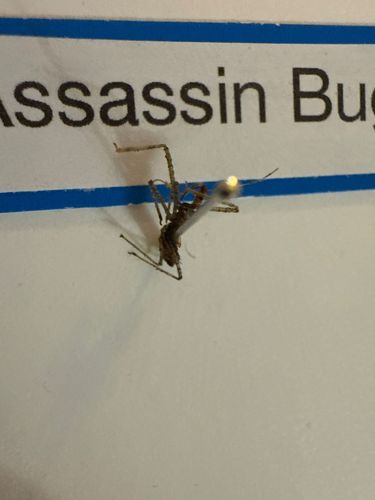Assassin Bug
Scientific Name: Family Reduviidae
Order & Family: Order Hemiptera, Family Reduviidae
Size: Typically, assassin bugs range from 5 mm to 40 mm (0.2 to 1.6 inches) in length, depending on the species.

Natural Habitat
Assassin bugs are found in a wide variety of habitats including forests, grasslands, agricultural fields, gardens, and sometimes around human dwellings. They often hide in vegetation like leaves, under bark, or in crevices, waiting for prey.
Diet & Feeding
Assassin bugs are predatory insects that feed on other insects. They use their specialized proboscis (a piercing-sucking mouthpart) to inject venom and digestive enzymes into their prey, liquefying their insides before sucking them out.
Behavior Patterns
These are generally solitary predators. Many species are ambush predators, lying in wait for unsuspecting prey to pass by, while others actively hunt. Some species, like the wheel bug, are known for their distinctive 'wheel' or 'cogwheel' shaped pronotum. They undergo incomplete metamorphosis, with nymphs hatching from eggs and developing through several instars before becoming adults.
Risks & Benefits
Potential risks include a painful bite if mishandled or threatened; while not usually medically significant, the bite can be comparable to a bee sting. Some species, particularly those in the subfamily Triatominae (kissing bugs), are vectors for Chagas disease, primarily in Central and South America. Benefits include being natural pest controllers in gardens and agriculture, preying on many common insect pests.
Identified on: 10/18/2025